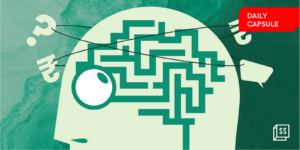Transfer Learning is a machine learning technique where a model trained on one task is adapted to perform well on a related, but different task. This approach can save time and resources by leveraging pre-existing knowledge and reducing the need for large amounts of new data. In this article, we will explore the concept of Transfer Learning, its underlying principles, and its applications across various domains.
Transfer Learning is a powerful technique in machine learning and artificial intelligence that allows researchers and developers to take advantage of pre-trained models to tackle new tasks. Key aspects of Transfer Learning include:
- Pre-trained Models: Models that have already been trained on a large dataset or specific task can be used as a starting point for Transfer Learning. These models have already learned valuable features and patterns that can be applied to related tasks.
- Fine-tuning: After initialising a model with the pre-trained weights, it can be further trained on a smaller dataset specific to the new task. This process, called fine-tuning, adapts the model to perform well on the new task while maintaining the knowledge gained from the original task.
- Domain Adaptation: Transfer Learning can be particularly effective when the original task and the new task share similar features or patterns, making it easier for the pre-trained model to adapt to the new domain.
Transfer Learning has been successfully applied in various domains, especially in fields like computer vision and natural language processing. In computer vision, pretrained models like VGG, ResNet, or Inception have been used to achieve state-of-the-art performance on image classification, object detection, and segmentation tasks. In natural language processing, models like BERT, GPT, and RoBERTa have been adapted for tasks like sentiment analysis, text classification, and machine translation.
Transfer Learning is a valuable technique in artificial intelligence and machine learning, enabling researchers and developers to build on the knowledge of pre-trained models to tackle new tasks more efficiently. As AI technologies continue to advance, the potential applications and benefits of Transfer Learning will become increasingly significant.
In future articles, we’ll dive deeper into other AI terminologies, like Graph Neural Networks, Federated Learning, and Feature Engineering. We’ll explain what they are, how they work, and why they’re important. By the end of this series, you’ll have a solid understanding of the key concepts and ideas behind AI, and you’ll be well-equipped to explore this exciting field further.










